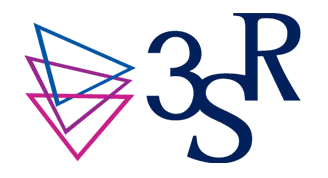Optimising 4D imaging of fast‑oscillating structures using X‑ray microtomography with retrospective gating
Résumé
Imaging the internal architecture of fast‑vibrating structures at micrometer scale and kilohertz
frequencies poses great challenges for numerous applications, including the study of biological
oscillators, mechanical testing of materials, and process engineering. Over the past decade, X‑ray
microtomography with retrospective gating has shown very promising advances in meeting these
challenges. However, breakthroughs are still expected in acquisition and reconstruction procedures to
keep improving the spatiotemporal resolution, and study the mechanics of fast‑vibrating multiscale
structures. Thereby, this works aims to improve this imaging technique by minimising streaking and
motion blur artefacts through the optimisation of experimental parameters. For that purpose, we
have coupled a numerical approach relying on tomography simulation with vibrating particles with
known and ideal 3D geometry (micro‑spheres or fibres) with experimental campaigns. These were
carried out on soft composites, imaged in synchrotron X‑ray beamlines while oscillating up to 400 Hz,
thanks to a custom‑developed vibromechanical device. This approach yields homogeneous angular
sampling of projections and gives reliable predictions of image quality degradation due to motion
blur. By overcoming several technical and scientific barriers limiting the feasibility and reproducibility
of such investigations, we provide guidelines to enhance gated‑CT 4D imaging for the analysis of
heterogeneous, high‑frequency oscillating materials.
| Origine | Publication financée par une institution |
|---|




